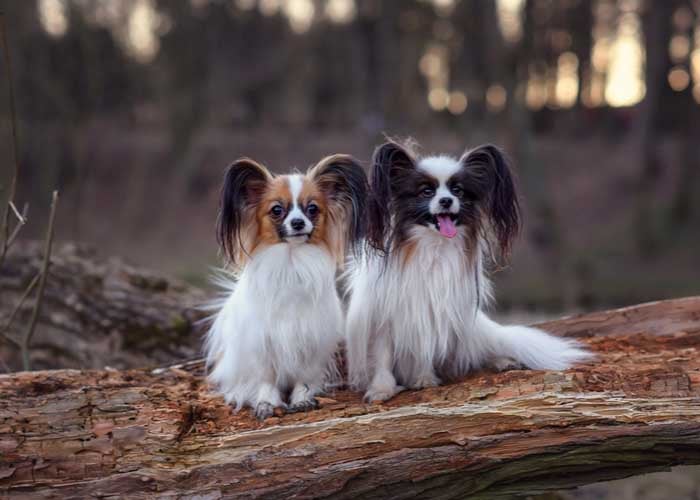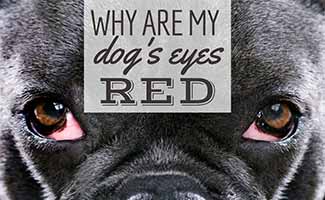Papillon Dog Breed Profile – Top Dog Tips
The Papillon dog breed is a little dog whose lineage is the toy spaniel. Neither hostile nor shy, it is a dog that is friendly to all.
It gets along with cats and other dogs if socialized at an early age. Its openness to strangers and other dogs makes the dog a favorite of all who sees it.
The Papillon temperament is that of an outgoing dog. Exposure of a Papillon puppy to its environment ensures it grows up socially skilled.
A pet with a pleasant character is playful and willing to be approached and held by people.
The iconic feature of the Papillon breed is its ears. Alert and happy, its nickname is “butterfly dog” with a radiant personality.
This dog is also called the Continental Toy Spaniel. It derived its name from its butterfly-like look of the straight, long, and fine hair on the ears.
In fact, the name Papillon means butterfly.
A common Papillon dog has upright ears but there is also a drop-ear type called a Phalene. Both Papillon and Phalene are still considered of the same breed.
Although delicately small, it is high in energy and very lively. Protective by nature, it is an excellent watchdog as it alerts its owner of any changes in the surrounding.
Recognized as a breed by the American Kennel Club in 1915, Papillons are among the top ten brightest dogs. Animal experts classified them 8th on the intelligence ranking level.
Papillon Dog Breed: General Characteristics
Height and Weight
Papillon dogs are tiny dogs measuring 8 to 11 inches and weighing from 5 to 10 pounds.
Some female papillon dogs only weigh around 5 to 8 pounds. Because of this, the papillon dog breed belongs to the toy dog breed group.
Coat
Papillon breeds have long, silky coats that come in several color combinations with white as the base color.
An all-white dog or with no white at all is disqualified to compete from the conformation show. The coat is generally white with patches of black, lemon, red, sable, and tan.
Papillon dog breeds can withstand heat but might need to wear jackets during winter. There is no undercoat fur to protect them from the cold weather.
Feature
The Papillon has dark and round eyes but is well known for its beautiful butterfly-like ears. The ears are large with rounded tips, and set on the sides and toward the back of the head.
Ears of the erect type flare from its head like the spread wings of a butterfly.
Ears of the drop type are like the erect type but carried drooping completely down.
Papillon Family Life
It is eager to please humans they bond with. In contrast to its active nature, the Papillon dog can be calm enough to be happy in spending time or sleeping with its human companion.
This dog will always try to be where its human is. It loves companionship and is affectionate with its owner.
Eager to join the fun, it has the spirit and energy to keep up with the family activity. It is gentle enough as a companion for seniors and playful to the young ones.
As with any dog breed, keep an eye during playtime because the Papillon breed will defend itself when mistreated. Most breeders won’t sell Papillon puppies to families with toddlers for fear that they will harm the dog.
This is not the breed for families that are away from home for long hours of the day. A multi-dog household will keep it from developing anxiety about being away from its human for an extended period of time.
The Papillon dog breed is highly adaptable to live in an apartment along with the other pets in the family, including cats.
Papillon Dog History
One of the oldest breeds of toy spaniels, Papillons were originally bred as charming and attentive companions for noblewomen. They were popular in fine art and appeared in portraits of royalties by Europe’s renowned artists.
Papillon dogs were developed in Renaissance times whose ancestors were known as dwarf spaniels. Spaniel means dog of Spain hence was concluded that the spaniel breeds originated there.
Although it was said that they originated in France, their origins are subject to debate. Spain, Italy, France, and Belgium are the contenders for where the dog came from.
Early Papillon breeds were often solid-colored. Today, they are predominantly white with colored markings as the standard when registered by the AKC.
Marie Antoinette, the last queen of France before the French Revolution, was an admirer of Papillon dog breeds. It was said that she had one with her while in prison awaiting to be beheaded.
Papillon Breed Health
The Papillon is generally healthy, but still prone to certain health conditions. Like all breeds, it is not free of harmful genes.
This dog breed seems to have no serious problems, but it’s important to be aware of them if you’re considering this breed.
If you’re buying a Papillon puppy, find a good breeder who will show you its health clearance.
Patellar Luxation
In this condition, the kneecap is out of its normal place. Patellar luxation causes lameness reducing the mobility of the dog.
It’s a hereditary problem that can be treated with physical therapy. Unfortunately, severe cases may need surgery.
Hypoglycemia
Low blood sugar will slow down your pet caused by lacking energy or enthusiasm. The Papillon dog is an active breed needing glucose for energy.
Progressive Retinal Atrophy (PRA)
This is an eye disorder that eventually causes blindness in your dog. It is detectable before the dog shows signs of blindness through an ophthalmologist evaluation.
Open Fontanel
The Papillon breed is born with a soft spot on the top of its head. An accidental blow to that spot could kill the dog.
Minor health concerns might occur as well such as dental problems that are particular to small breeds, allergies, and seizures.
How to Care for Papillons
Exercise
Either an adult or puppy, the Papillon dog breed needs walks or playtimes per day.
It is a house dog and not suited to living outdoors. Its small size makes it a wonderful indoor pet but that doesn’t mean they don’t need exercise.
Play will take care of its exercise needs. You can play catch indoors while it will happily run in the yard outdoors.
RELATED: Exercise Your Dog When You Can’t Go on a Walk
Training
Papillons are very active and enjoy having a job to perform. Breeders recommend dog agility and obedience training because of their intelligence and energy level.
They are smart and easy to train. Given their brilliance, they require strict training and mental stimulation to prevent behavioral issues from occurring due to boredom.
Papillon puppies can be fragile. They can easily break a leg jumping off the bed, so try to avoid such situations by teaching them to use steps to get on.
Crate training at a young age will help your Papillon dogs accept confinement when traveling or hospitalized. A crate is also a place where he can take a nap.
They shouldn’t be in it except when sleeping. A crate or kennel is not a jail for detaining dogs.
Papillon dog breeds are companion dogs and develop undesirable behaviors if left alone for long periods of time. Fortunately, they can bond with other pets as well as humans if properly socialized.
Early exposure is important for them to get along well with other pets. They can be distrustful and may be violent toward other dogs and people.
Food rewards and praise are positive reinforcements when training them. They are clever that have an easy time learning.
Papillon breeds are excellent agility dogs and are winners at tournaments. Owners can train them to do all sorts of tricks.
Grooming
The Papillon is low maintenance when it comes to grooming because it has no undercoat. You can seldom brush and clean its long, silky hair to keep the coat healthy.
It has no doggie odor, so bathing it regularly is not necessary. Trim nails consistently because they grow quickly.
Finally, regular brushing of the teeth is vital for hygiene and dental health.
Diet and Nutrition
A Papillon dog will do well on high-quality dog food, whether commercially manufactured or home-prepared. Its diet should be appropriate to the dog’s age with your veterinarian’s approval and supervision.
Some dogs are prone to getting overweight and a Papillon breed has no exemption from that. It has delicate knees and so, it’s not allowed to get fat.
Watch your dog’s calorie consumption and weight level. Giving too many treats when training can cause obesity.
Ideal Owners of Papillon Dogs
Is this dog for you?
Do not choose the Papillon dog breed simply because of how it looks, no matter how appealing it is. When getting one of your own, keep in mind that it is a companion dog.
It will not do well in an environment where there is little attention. This dog would rather be with its human companion than anywhere else, choosing to be never away from you.
Papillons are delightful, easy-to-care-for companions for novice owners. For first-time dog parents, they are gentle enough to manage.
They adapt well to apartment living and in-country estates but do not tolerate being alone. Papillon dogs can be hurt by rough play, so they are not suitable for families with very small children.
Adopt. Don’t shop.
Consider adopting dogs from shelters or rescue groups before buying one. There are many Papillon puppies for adoption and in need of fostering.
You may contact the rescue groups in your local for Papillon dog breed information. The Papillon Club of America formed in 1935 will provide you with a clear understanding of what goes into owning one.
But if you prefer purebred dogs, look for reputable Papillon breeders who make sure their dogs are free of genetic diseases that they might pass onto the puppies.
Unlike pet stores, good breeders have papillon dogs for sale raised in preparation as family dogs.
Your encounter in dog ownership will help you in choosing your new pooch. If you enjoy a dog’s companionship while doing activities, a Papillon might be the dog for you.
Above all, the ideal owner is a gentle, caring person who is willing to have this breed as part of their family.
RELATED: 40 Reputable Dog Breeders in the U.S. (2022)
FAQs about Papillon Breeds
Is a Papillon dog breed a good family dog?
It can make excellent family dogs but still need to be looked after around small children. They are small-boned dogs that kids can hurt by playing too rough.
Why you should not get a Papillon dog breed?
People purchase it without a clear understanding of how fragile a toy breed is. You can seriously injure it when not taken care of properly.
It tends not to realize how small it actually is, so owners need to watch carefully if it sets out after a larger dog.
Is a Papillon dog breed intelligent?
It ranked 8th among the other intelligent breeds. It is among the most obedient and responsive toy breeds.
Papillon Dog Breeds Summary
The name of the Papillon dog breed comes from the French word for butterfly. It refers to the fringed upright ears, which resemble a butterfly’s outspread wings.
There are also that come in a drop-eared variety called the Phalene, which means “moth”. Still, both varieties are of the same breed.
The Papillon is the modern representation of the small spaniels often seen in paintings from centuries past. It has been a wonderful companion who graced the laps of the royalties many years ago.
The Papillon dog is a small, energetic, and fine-boned dog that is also known as the Continental toy Spaniel or Dwarf Spaniels.
Its size makes it easy to handle especially for first-time dog owners. It is a delightful little dog that makes a great exercise buddy.
In obedience tournaments, it is an excellent competitor. It is a smart dog that trains to participate in dog sports such as agility or rally.
Its desire to succeed and will to please its human makes it good at learning tricks. While tiny in size, its energy level ranges from moderate to intense
The Papillon breed is not a rare breed, but he’s not common, either. It tends to have a small litter but is bred for centuries to be the ultimate companion.
If you are looking for an is an outgoing pet, this could be the dog for you. The Papillon dog breed will be a member of your family for years to come.
READ NEXT: 20 World’s Best Toy Dog Breeds
Related











viagra originale in 24 ore contrassegno https://viasenzaricetta.com/#
darkmarket list darknet markets 2023
darkmarket dark market link
tor market url the dark internet